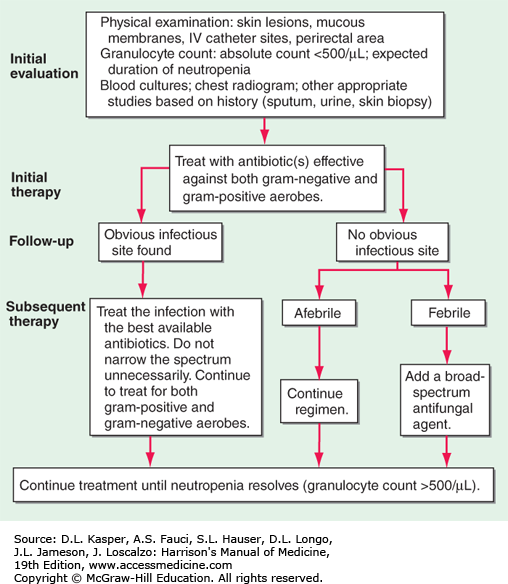Algorithm for the Diagnosis and Treatment of Fever and Neutropenia 

Algorithm for the diagnosis and treatment of fever and neutropenia. Several general guidelines are useful in the initial treatment of febrile neutropenic pts: (1) The agents used should reflect both the epidemiology and the antibiotic resistance pattern of the hospital. (2) A single third-generation cephalosporin constitutes an appropriate initial regimen in many hospitals (if the pattern of resistance justifies its use). (3) Most standard regimens are designed for pts who have not previously received prophylactic antibiotics. The development of fever in a pt who has received antibiotics affects the choice of subsequent therapy (which should target resistant organisms and organisms known to cause infections in pts being treated with the antibiotics already administered). (4) Randomized trials have indicated that it is safe to use oral antibiotic regimens to treat “low-risk” pts who have fever and neutropenia. Outpatients who are expected to remain neutropenic for <10 days and who have no concurrent medical problems (such as hypotension, pulmonary compromise, or abdominal pain) can be classified as low risk and treated with a broad-spectrum oral regimen.